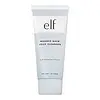What's inside
What's inside
 Key Ingredients
Key Ingredients

No key ingredients
 Benefits
Benefits

 Concerns
Concerns

 Ingredients Side-by-side
Ingredients Side-by-side

Water
Skin ConditioningAcrylates Copolymer
Cocamidopropyl Hydroxysultaine
CleansingSodium Cocoyl Isethionate
CleansingXylitylglucoside
HumectantPropanediol
SolventCoco-Glucoside
CleansingAnhydroxylitol
HumectantStearic Acid
Cleansing1,2-Hexanediol
Skin ConditioningXylitol
HumectantPanthenol
Skin ConditioningCoconut Alcohol
EmollientCitric Acid
BufferingPEG-150 Pentaerythrityl Tetrastearate
EmulsifyingStearyl Alcohol
EmollientGlycerin
HumectantSodium Hydroxide
BufferingSodium Chloride
MaskingCaprylhydroxamic Acid
Disodium EDTA
Xanthan Gum
EmulsifyingPotassium Sorbate
PreservativeAvena Sativa Leaf Extract
AstringentWater, Acrylates Copolymer, Cocamidopropyl Hydroxysultaine, Sodium Cocoyl Isethionate, Xylitylglucoside, Propanediol, Coco-Glucoside, Anhydroxylitol, Stearic Acid, 1,2-Hexanediol, Xylitol, Panthenol, Coconut Alcohol, Citric Acid, PEG-150 Pentaerythrityl Tetrastearate, Stearyl Alcohol, Glycerin, Sodium Hydroxide, Sodium Chloride, Caprylhydroxamic Acid, Disodium EDTA, Xanthan Gum, Potassium Sorbate, Avena Sativa Leaf Extract
Water
Skin ConditioningPEG-7 Glyceryl Cocoate
EmulsifyingDipropylene Glycol
HumectantPoloxamer 184
EmulsifyingSodium Acrylate/Sodium Acryloyldimethyl Taurate Copolymer
Emulsion StabilisingBetaine
HumectantIsohexadecane
EmollientXylitylglucoside
HumectantCocos Nucifera Fruit Juice
EmollientAcer Saccharum Extract
Skin ConditioningAloe Barbadensis Leaf Extract
EmollientCucumis Sativus Fruit Extract
EmollientPanthenol
Skin ConditioningHydroxyacetophenone
AntioxidantIsopropyl Myristate
EmollientCeramide AP
Skin Conditioning1,2-Hexanediol
Skin ConditioningAnhydroxylitol
HumectantPolysorbate 80
EmulsifyingAllantoin
Skin ConditioningXylitol
HumectantParfum
MaskingWater, PEG-7 Glyceryl Cocoate, Dipropylene Glycol, Poloxamer 184, Sodium Acrylate/Sodium Acryloyldimethyl Taurate Copolymer, Betaine, Isohexadecane, Xylitylglucoside, Cocos Nucifera Fruit Juice, Acer Saccharum Extract, Aloe Barbadensis Leaf Extract, Cucumis Sativus Fruit Extract, Panthenol, Hydroxyacetophenone, Isopropyl Myristate, Ceramide AP, 1,2-Hexanediol, Anhydroxylitol, Polysorbate 80, Allantoin, Xylitol, Parfum
 Reviews
Reviews

Ingredients Explained
These ingredients are found in both products.
Ingredients higher up in an ingredient list are typically present in a larger amount.
1,2-Hexanediol is a synthetic liquid and another multi-functional powerhouse.
It is a:
- Humectant, drawing moisture into the skin
- Emollient, helping to soften skin
- Solvent, dispersing and stabilizing formulas
- Preservative booster, enhancing the antimicrobial activity of other preservatives
This ingredient is created from dehydrating xylitol in acidic conditions. Xylitol is a famous sugar and humectant.
Much like its predecessor, anhydroxylitol is a humectant. Humectants attract and hold water to moisturize the skin.
This ingredient is most commonly found in a popular trio called Aquaxyl. Aquaxyl is made up of anhydroxylitol (24 - 34%), xylitylglucoside (35 - 50%), and xylitol (5 - 15%).
According to a manufacturer, Aquaxyl is known for a 3-D hydration concept and an anti-dehydration shield to reinforce the outer layer of skin.
This ingredient is often derived from plants such as wood and sugarcane.
Learn more about AnhydroxylitolPanthenol is a common ingredient that helps hydrate and soothe the skin. It is found naturally in our skin and hair.
There are two forms of panthenol: D and L.
D-panthenol is also known as dexpanthenol. Most cosmetics use dexpanthenol or a mixture of D and L-panthenol.
Panthenol is famous due to its ability to go deeper into the skin's layers. Using this ingredient has numerous pros (and no cons):
Like hyaluronic acid, panthenol is a humectant. Humectants are able to bind and hold large amounts of water to keep skin hydrated.
This ingredient works well for wound healing. It works by increasing tissue in the wound and helps close open wounds.
Once oxidized, panthenol converts to pantothenic acid. Panthothenic acid is found in all living cells.
This ingredient is also referred to as pro-vitamin B5.
Learn more about PanthenolWater. It's the most common cosmetic ingredient of all. You'll usually see it at the top of ingredient lists, meaning that it makes up the largest part of the product.
So why is it so popular? Water most often acts as a solvent - this means that it helps dissolve other ingredients into the formulation.
You'll also recognize water as that liquid we all need to stay alive. If you see this, drink a glass of water. Stay hydrated!
Learn more about WaterXylitol is a humectant and prebiotic. It can help with dry skin.
In studies, xylitol has been shown to improve dry skin. It decreased transepidermal water loss, or when water passes through the skin and evaporates. Xylitol also showed to help improve the biomechanical properties of the skin barrier.
The prebiotic property of xylitol may also help reinforce our skin's natural microbiome. Having a healthy microbiome prevents infection by bad bacteria and helps with hydration.
As a humectant, Xylitol helps draw moisture from both the air and from deeper skin layers. This helps keep skin hydrated.
Xylitol is a sugar alcohol and commonly used as a sugar substitute. It is naturally occurring in plants such as strawberries and pumpkin.
Learn more about XylitolXylitylglucoside is created from xylitol and glucose, two humectants.
Not surprisingly, this ingredient is also a humectant. It attracts and holds water in your skin, helping to maintain hydration.
This ingredient is most commonly found in a popular trio called Aquaxyl. Aquaxyl is made up of anhydroxylitol(24 - 34%), xylitylglucoside (35 - 50%), and xylitol (5 - 15%).
According to a manufacturer, Aquaxyl is known for a 3-D hydration concept and an anti-dehydration shield to reinforce the outer layer of skin.
Learn more about Xylitylglucoside